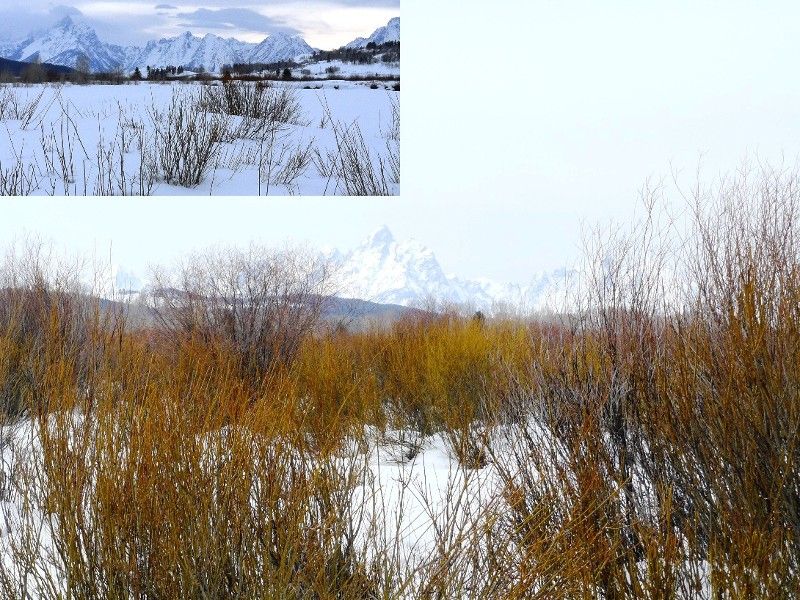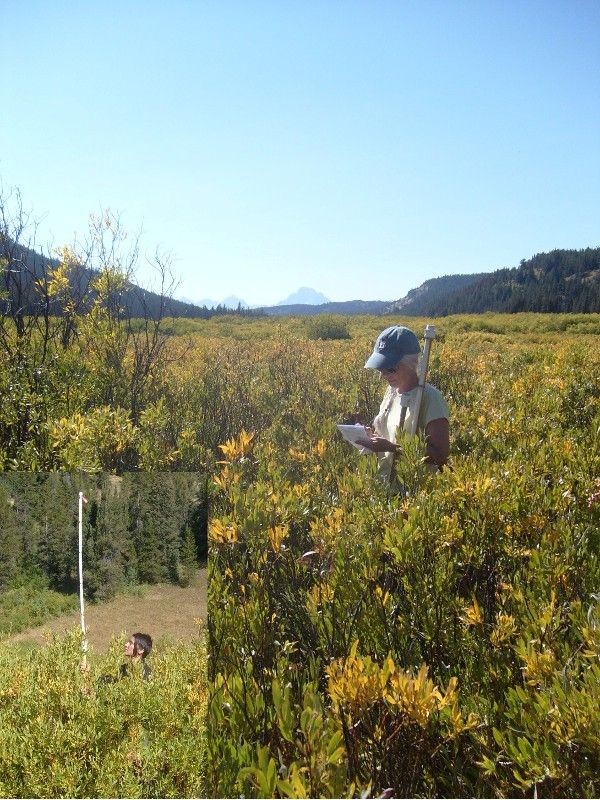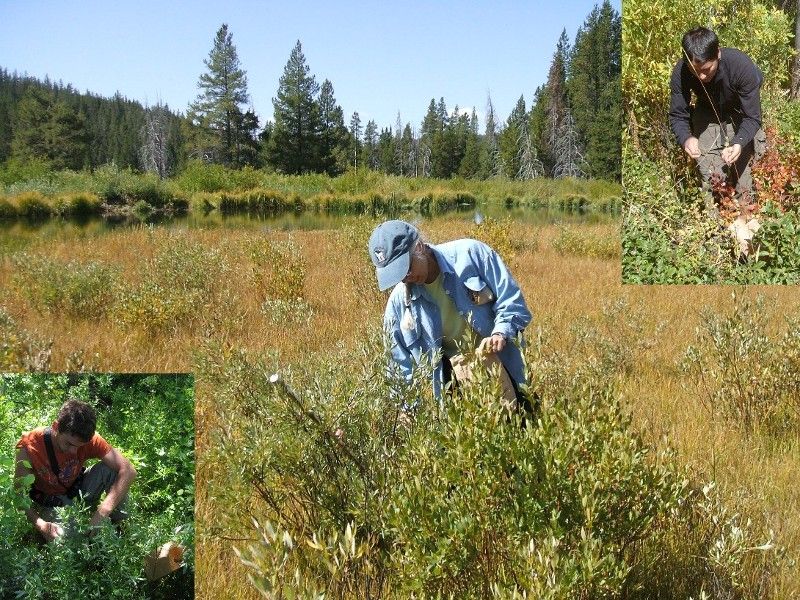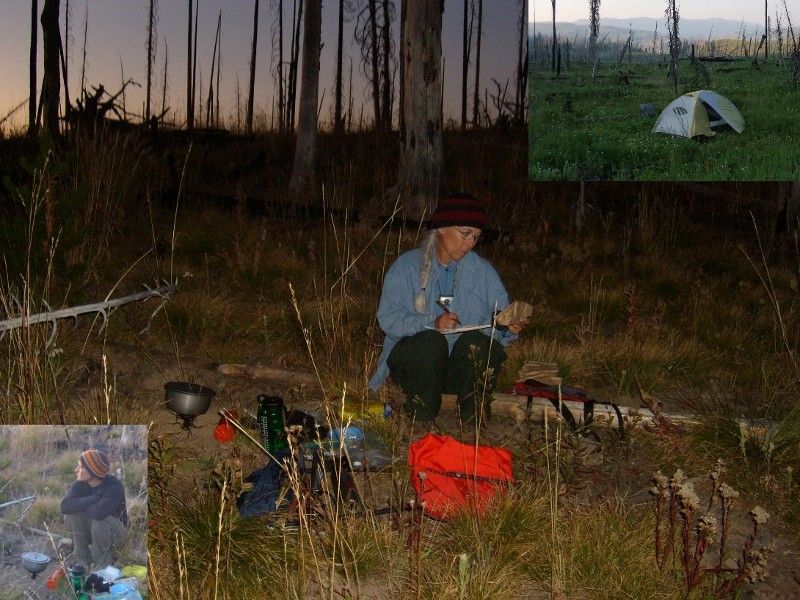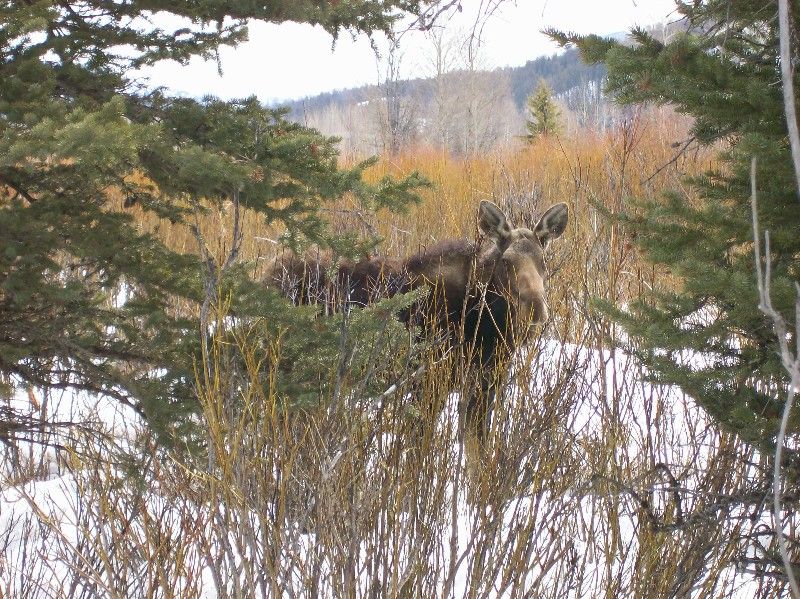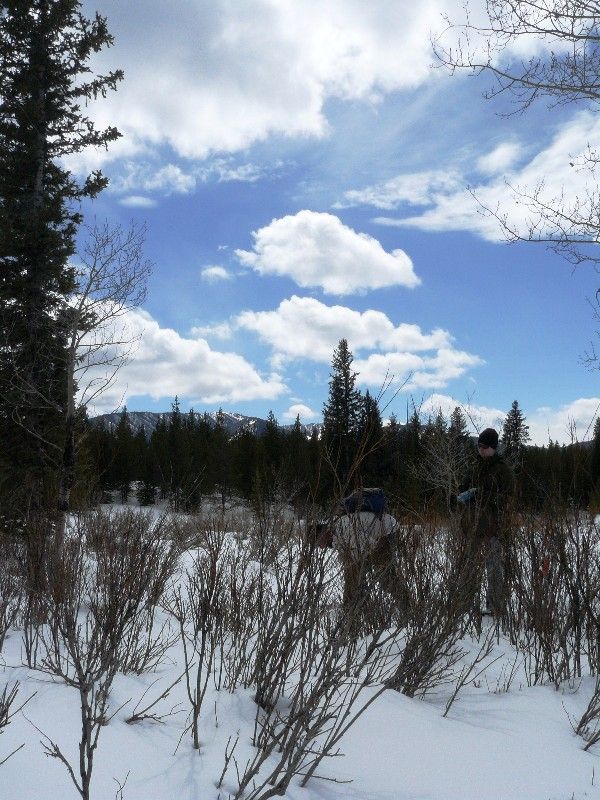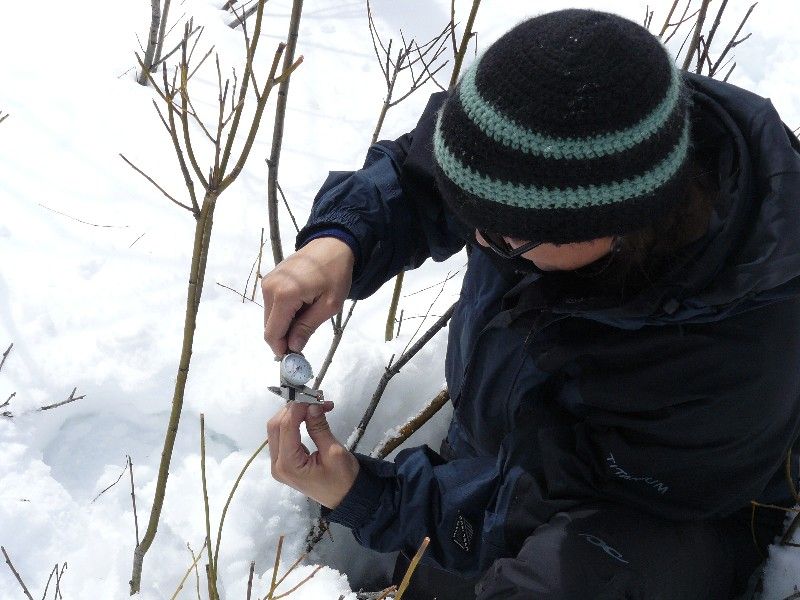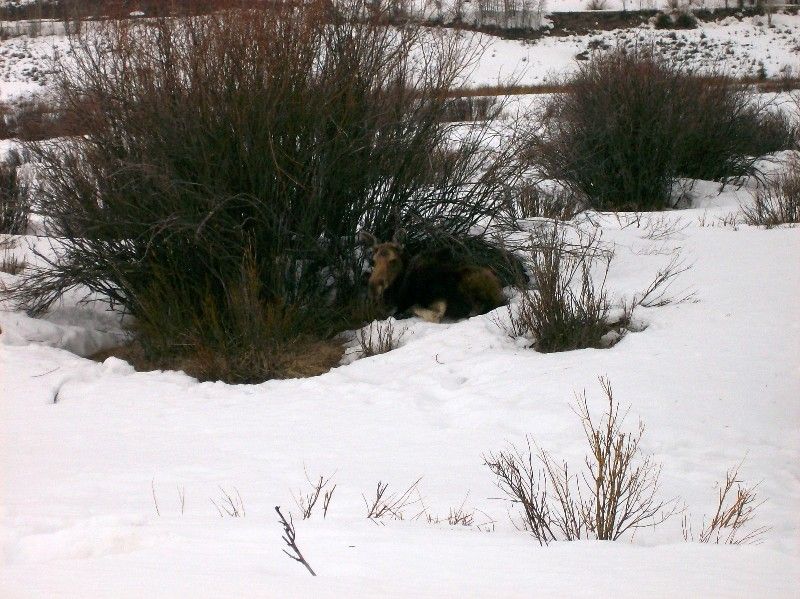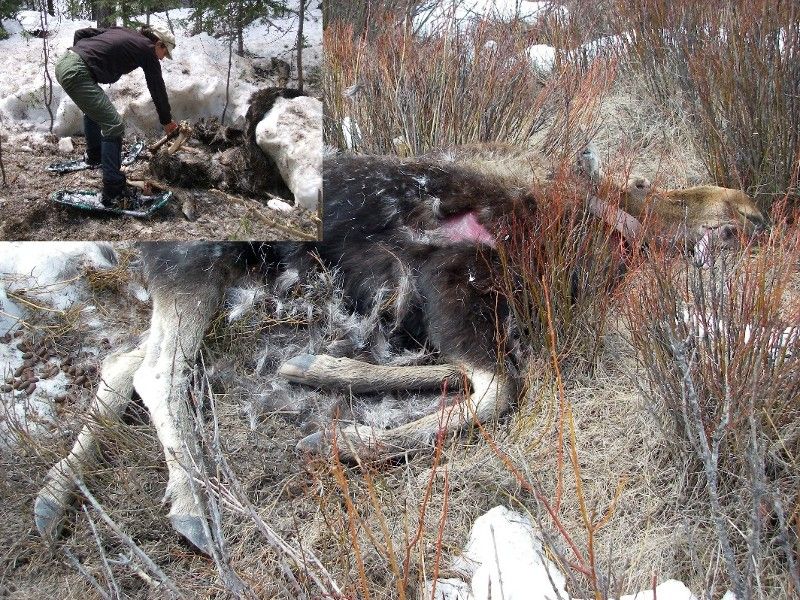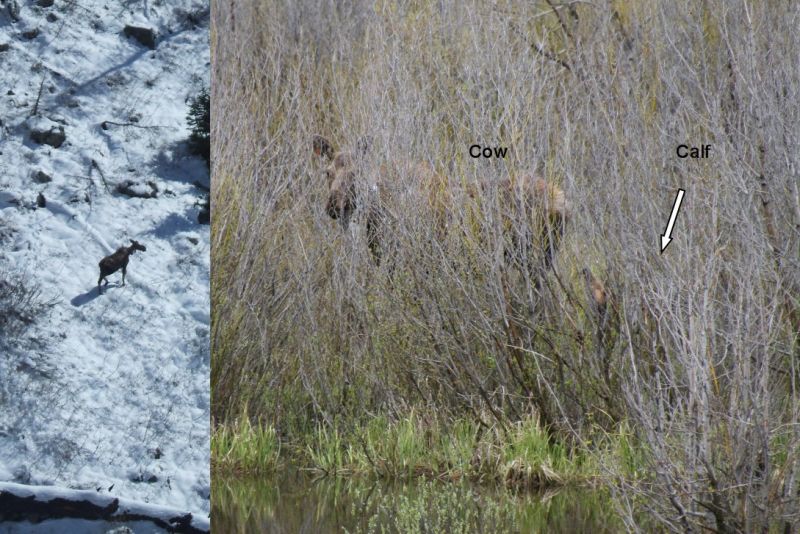We are working to understand the influnece of seasonal limitations and limiting factors on ungulate populations. Landscapes are being altered at increasing rates from both anthropogenic and natural causes. Growing human populations and increasing frequency of natural disturbances like wildfires produce fine to large-scale changes on the landscape. Such disturbances can alter habitat use and result in population-level consequences and thus challenges our ability to conserve and manage wildlife populations. In collaboration with the Wyoming Game and Fish Department, Grand Teton National Park, and the US Forest Service, we are exploring the influence of large scale disturbance (i.e., wildfire) on a moose population in northwest Wyoming. Shiras moose (Alces alces shirasi) that inhabit areas within Grand Teton National Park and Bridger-Teton National Forest, have been experiencing a population decline for the last 16-22 years. Recent research has shown that these animals are highly migratory and that most moose wintering in the Buffalo Valley migrate north and summer in southern portions of Yellowstone National Park. By evaluating the condition and demography of captured moose, previous research that we conducted suggested that poor habitat quality is most likely limiting this population. Habitat quality has not been directly measured, however, and it is not known if summer or winter habitat is most limiting. Additionally, much of the summer range in the study area burned during the Yellowstone fires of 1988. Fire typically creates habitats favorable for moose, and is often followed by an increase in moose reproduction and density. However, moose in this study population have continued to decline despite an abundance of fires in the last 20 years. Thus, the influence of fire on Jackson moose population performance remains unclear. The growth of wolf and grizzly bear populations further complicates our understanding of moose population ecology in the region. We are evaluating moose habitat by characterizing browse condition, diet, and the nutritional quality of forage on both winter and summer ranges. The overall objective of this study is to assess the condition and nutritional quality of forage at both times of the year and to connect these measures of seasonal habitat quality with the demographic performance of individual moose. We hope to provide a more mechanistic understanding of the effects of disturbance and seasonal habitat quality on moose demography and population growth and to clarify the role of habitat change in recent population declines.
Gallery
You can see the Grand Tetons from Shiras moose winter range in the Buffalo Valley. Booth (orange) and geyer (red and taller) willow are abundant on winter range, however, increasing snow depths can bury much of the available browse as winter progresses.
You can see the Grand Tetons from Shiras moose winter range in the Buffalo Valley. Booth (orange) and geyer (red and taller) willow are abundant on winter range, however, increasing snow depths can bury much of the available browse as winter progresses.
During summer, we used the same methods to assess browsing intensity as in winter. Measurements included such things as browse point diameters, total willow height, height of dead stems and length of current year growth, among others.
During summer, we used the same methods to assess browsing intensity as in winter. Measurements included such things as browse point diameters, total willow height, height of dead stems and length of current year growth, among others.
Because moose diets are more diverse in summer than winter, we collected a lot more forage species for nutritional analysis in summer. These included willow leaves, willow stems, sticky geranium, fireweed, and pond weed, among others.
Because moose diets are more diverse in summer than winter, we collected a lot more forage species for nutritional analysis in summer. These included willow leaves, willow stems, sticky geranium, fireweed, and pond weed, among others.
At the end of each summer day, we pitched camp, organized and logged all the samples we had collected while dinner cooked, and looked forward to another long day of field work tomorrow…
At the end of each summer day, we pitched camp, organized and logged all the samples we had collected while dinner cooked, and looked forward to another long day of field work tomorrow…
During winter, available browse includes the stems of willows, aspen, bog birch, and subalpine fir, among others. Moose spend a lot of their time along the edges of willow and conifer patches for food and cover.
During winter, available browse includes the stems of willows, aspen, bog birch, and subalpine fir, among others. Moose spend a lot of their time along the edges of willow and conifer patches for food and cover.
Measures of the diameter at which willow stems were browsed were obtained to assess change in browse pressure across winter. These measurements were also used to determine the diameter at which to collect forage samples for nutritional analysis.
Measures of the diameter at which willow stems were browsed were obtained to assess change in browse pressure across winter. These measurements were also used to determine the diameter at which to collect forage samples for nutritional analysis.
By the end of winter, moose were often in poor condition, weakened from heavy tick loads and winter stressors.
By the end of winter, moose were often in poor condition, weakened from heavy tick loads and winter stressors.
The majority of moose mortality occurred in late winter (April-May). When possible, mortalities were investigated to determine cause of death. Most moose deaths were a result of malnutrition; however, some predation events were documented.
The majority of moose mortality occurred in late winter (April-May). When possible, mortalities were investigated to determine cause of death. Most moose deaths were a result of malnutrition; however, some predation events were documented.
Every radio-collared adult female moose was observed via helicopter or ground survey in June to document parturition events (births) and again in July to determine if the neonate had survived its first month of life.
Every radio-collared adult female moose was observed via helicopter or ground survey in June to document parturition events (births) and again in July to determine if the neonate had survived its first month of life.
Every month in summer (June-September), we navigated into the backcountry of the Teton Wilderness (on foot or stock) to sample moose summer habitat. Some of the summer ranges experienced major wildfires in 1988, while other did not.
Every month in summer (June-September), we navigated into the backcountry of the Teton Wilderness (on foot or stock) to sample moose summer habitat. Some of the summer ranges experienced major wildfires in 1988, while other did not.
Every month we collected at least 5 fecal samples from each sampling area in winter and summer. Moose fecal pellets are more difficult to find in summer than winter. Fecal samples were sent to a laboratory to identify and determine the proportion or each
Every month we collected at least 5 fecal samples from each sampling area in winter and summer. Moose fecal pellets are more difficult to find in summer than winter. Fecal samples were sent to a laboratory to identify and determine the proportion or each forage species moose were consuming.
Reports & Publications
GTNP Annual Report 2008
GTNP Annual Report 2009
YNP Annual Report 2008
YNP Annual Report 2009
Contact
Janess Vartanian
University of Wyoming
Department of Zoology and Physiology
WY Cooperative Fish and Wildlife Research Unit
1000 E University Ave
Laramie, WY 82071
[email protected]
Office: (303) 766-6415
Doug Brimeyer, Wildlife Biologist
Wildlife Biologist
Wyoming Game and Fish Department
420 N. Cache
P.O. Box 67
Jackson, WY83001
[email protected]
Office: (303) 733-2321
Steve Kilpatrick, Habitat Biologist
Wyoming Game and Fish Department
420 N. Cache
P.O. Box 67
Jackson, WY83001
[email protected]
Office: (303) 733-2321
Sarah Dewey, Wildlife Biologist
Grand Teton National Park
P.O. Drawer 170
Moose, WY 83012
[email protected]
office: (307) 739-3480
Project Lead
Janess Vartanian is a MS candidate based in the Cooperative Fish and Wildlife Research Unit and the Department of Zoology and Physiology. Prior to starting her research, Janess obtained a Bachelor’s of Science in Zoology from North Carolina State University.
Timeline
Study design for this project began in the fall of 2007. Field work commenced January 2008 and was concluded at the end of September 2009. Data collection took place seasonally (winter January-April and summer June-September) in 2008 and 2009. During this time, moose captures occurred in mid-February, and helicopter surveys to document parturition and neonate survival in June and July, respectively. GPS collars remotely released May 1, 2010 and laboratory analysis of forages was completed in the fall of 2010.
Project completed December 2011.
Funding & Partners
Teton Conservation District • US Forest Service • Wyoming Animal Damage Management Board • Wyoming Game and Fish Department • Wyoming Governor’s Big Game License Coalition • Wyoming State Wildlife Grants



